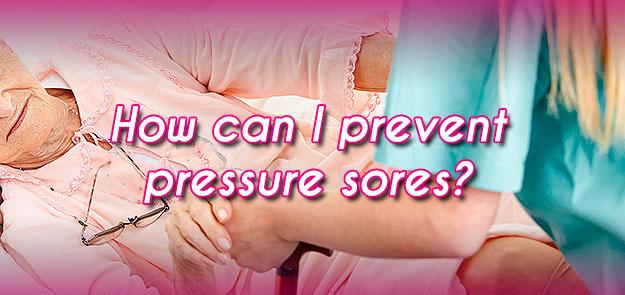How can I prevent pressure sores?
Prevention is the most important thing when facing an illness or simply aging. We must preventpossible problems that could develop pinto future health complications.
Despite, it is not always possible because there are many other factors related to previous health problems of the patient. Even though, we must emphasis on prevention so that ulcers don’t emerge or get worse.
Next, we outline some advices for the skin care :
– To exam the skin daily: Colour, texture, turgor, vascularization, humidity and temperature. This exploring must be thorough in patients with circulatory ordiabetes problems.
– Keep the patient’s skin clean and dry, paying close attention to the skin folds.
– Wash the patient with warm water and soap or a pH neutral gel (pH of 5) to eliminate perspiration and secretions, without changing their natural acid mantle. We must perform this wash as many times as necessary, depending on the patient’s needs (sweating, obesity, incontinence, etc.)
– Do not use alcohol or colognes on the skin. Only camphor alcohol may be used to achieve a vasodilatation to facilitate the influx of blood to the tissues.
– Use a moisturizer or emollient cream, ensuring that it is completely absorbed.
– Massages can be performed to activate circulation and promote relaxation. They should be performed by moving the skin and subcutaneous tissue gentlybut never over the bony prominences.
– When changing the bed clothes,we should be careful not to leave folds in the bottom sheet since they could cause ulcers. The rest of the clothes should not put pressure on the patient’s body.
Mobilization and postural changes:
– In patients who cannot collaborate in postural changes, it is important to carry out a mobilization plan every 3 hours, following a certain rhythm of rotation. The patient will never be dragged into bed to make the change since this could cause a sore from rubbing.
– Risky areas and areas with bony prominences should not be subjected to pressure. Use antidecubitus products such as bedsocks, elbow pads, knee pads, etc.
– To prepare a rehabilitation plan that improves the patient’s mobility.
– To maintain a body alignment and a weight distribution.
– If the head of the bed has to be elevated, it must not exceed 30º, and we must not maintain this position for a long time.
– As a complement you can use mattresses (water, silicone, foam and alternating air pressure), cushions, pillows, antidecubitus sheets, local protections for heels and elbows, etc. Keep in mind that they never replace mobilization. They are used to soften the pressure of the body on the support surface.
– When the patient lies on his side on the bed, he should not lean directly on the hip bone. In addition to the pillow of the head, it is convenient to place a pillow between your knees to separate them and relieve pressure. Another pillow will be placed supporting the back forming an angle of 45º to 60º. The legs will be slightly flexed andforming a right angle with the feet.
-When the patient is lying on his back, he must keep his heels up, for which a vascular pillow or cylinder will be placed. It is necessary to avoid that the ankles touch each other.
– When the patient is sitting, mobilizations will take place every hour.
– It is convenient to favor a progressive ambulation whenever possible.
General care:
– To maintain good hydration and nutrition.

